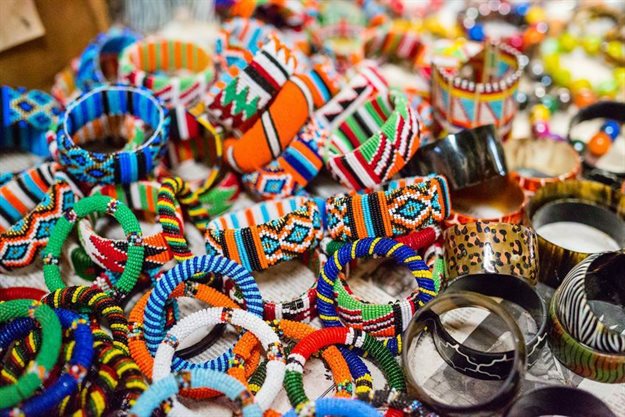
The Masai culture in Kenya, for instance, uses beadwork for their necklaces that symbolises age and social status. The women in these tribes wear these beaded pieces as a sign of wealth, marital status, health and to denote the number of children they have. For instance, if a woman’s first child is a boy, she wears many earrings.
In South Africa, in previous years, wives in the Ndebele culture wore copper necklaces to symbolise faithfulness to husbands.
Traditional African jewellery designs have become a prominent feature on the international fashion stage. Many fashion brands are taking inspiration from traditional African jewellery and showcasing it on a global stage. There is an ever-growing international demand for the sale and purchase traditional jewellery on a commercial scale. This interest in traditional jewellery has resulted in accusations of cultural appropriation and exploitation of certain populations’ indigenous culture. Therefore, many indigenous communities worldwide have called for stricter statutory regulations to ensure the protection of their traditional knowledge.
In New Zealand, the indigenous Maori people have a rich culture, which became subject to many trademark registrations. In order to safeguard the traditional knowledge, a new legalisation stipulates that the New Zealand Intellectual Property Institute (IPONZ) cannot grant a trademark if it considers that its use or registration may offend the Maori people.
Similarly, in Kenya, the Protection of Traditional Knowledge and Cultural Expressions Act, includes provisions that ensure “communities receive royalties for the use of their cultures and cultural heritage’ (Article 11(3(a)). The Kenyan government aims to ensure that the Traditional Knowledge is commercialized to benefit the communities.
In South Africa, due to the lack of clarity regarding the protection of traditional knowledge, the Protection, Promotion, Development and Management of Indigenous Knowledge Systems Bill, 2016 was drafted to ensure adequate protection was provided as such.
The Bill ultimately envisages that the holder of traditional knowledge will be entitled to benefit from the commercial use of that traditional knowledge and restrain any unauthorised use thereof. The definition of cultural expression in the Bill is wide enough to include accessories and jewellery designs.
The commercialisation of traditional knowledge is a way to protect the past, while ensuring that the communities benefit from the use of the traditional knowledge. The Bill must ensure strict guidelines are in place to ensure that the communities are not exploited, and the income and/or benefits derived from the traditional knowledge assists the communities.
Until the enactment of the Bill, traditional jewellery will continue to be protected under the current Intellectual Property laws in terms of copyright law for artistic works and trademark protection for traditional patterns and designs. Therefore, for communities looking to protect their traditional jewellery, it will be advisable to consult an IP attorney to determine the best course of action.